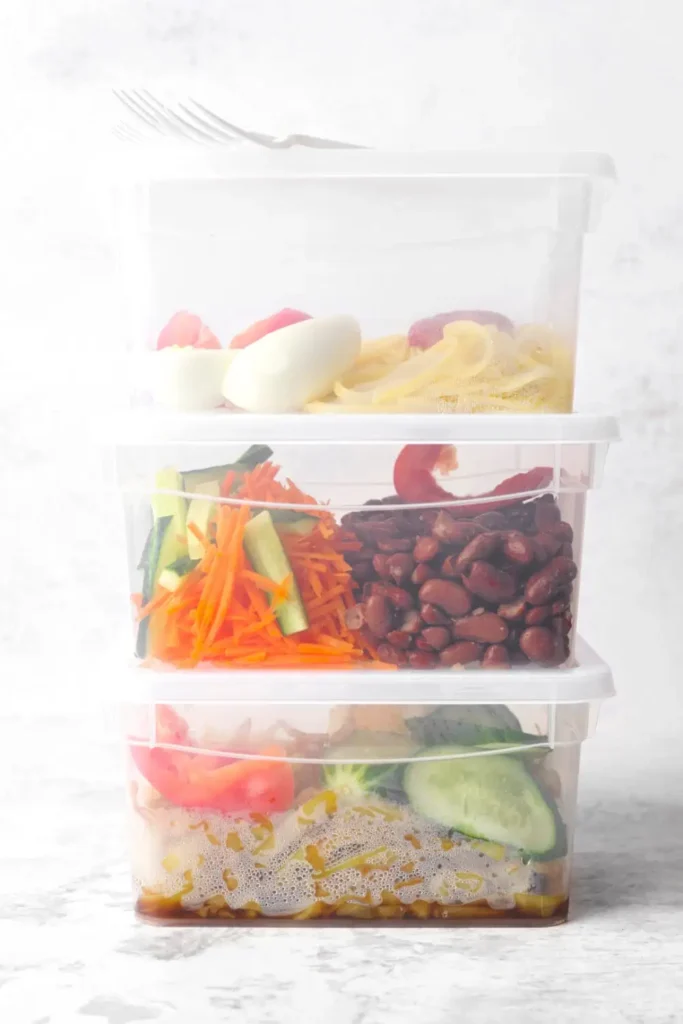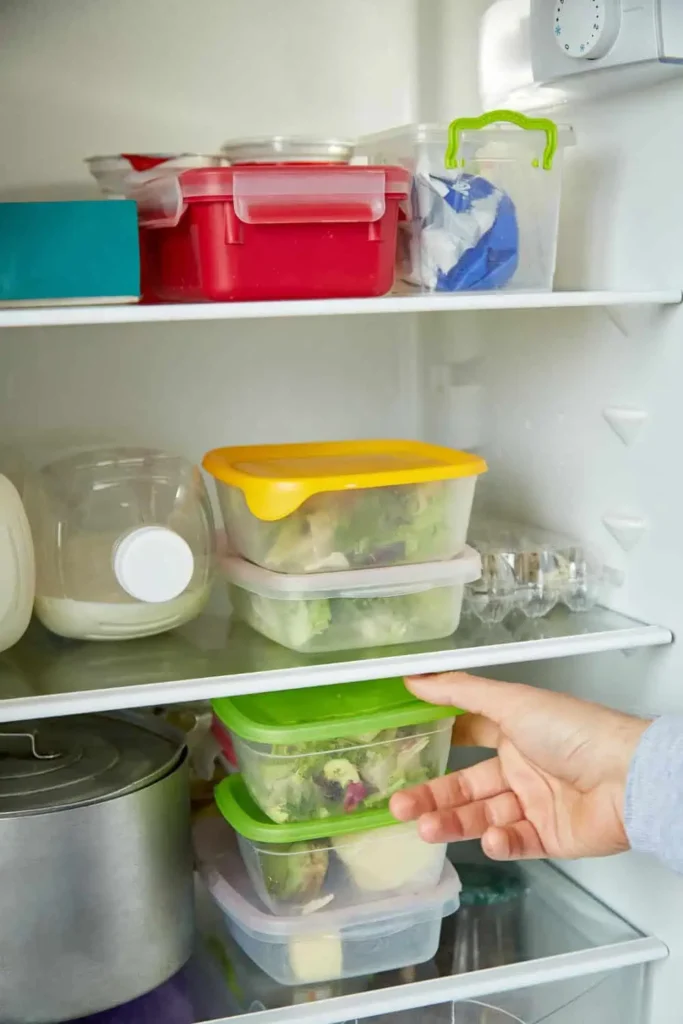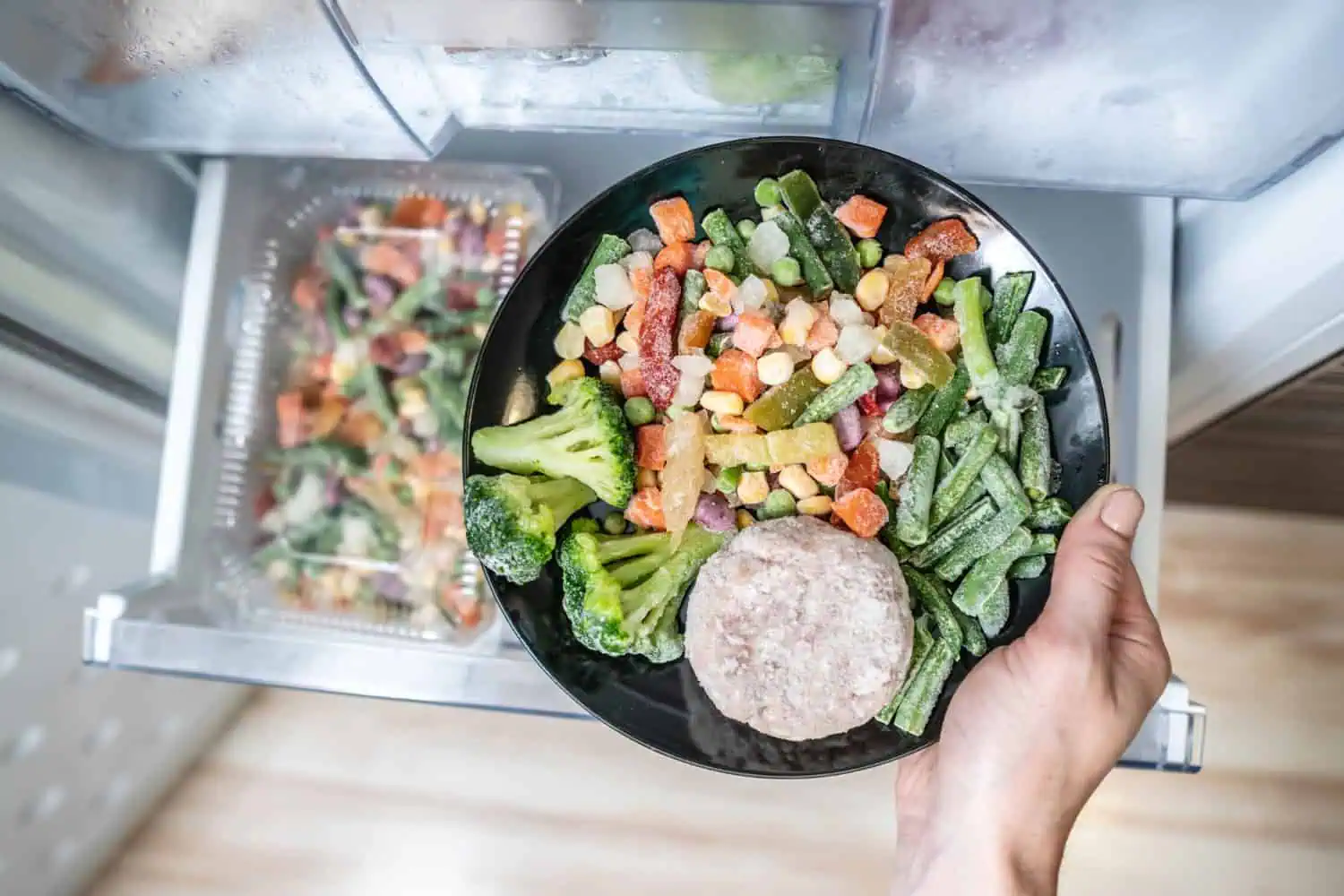If you’ve ever prepared a delicious and hearty dense bean salad, you might wonder, “How long are dense bean salads good for in the fridge?” Whether you’re meal prepping for the week, storing leftovers from a party, or simply ensuring your salads stay fresh, understanding the shelf life of these nutritious dishes is essential. In this comprehensive guide, we’ll explore everything you need to know about storing dense bean salads safely, optimizing their freshness, and recognizing when it’s time to toss them out.
Understanding Dense Bean Salads and Their Shelf Life
Dense bean salads are a staple in many kitchens due to their versatility, nutritional value, and ease of preparation. Typically composed of various beans such as black beans, chickpeas, kidney beans, and lentils, these salads often include a mix of vegetables, herbs, and dressings that contribute to their rich flavor and hearty texture.
Common Ingredients in Dense Bean Salads
- Beans: Black beans, chickpeas, kidney beans, lentils
- Vegetables: Bell peppers, onions, tomatoes, cucumbers
- Herbs: Parsley, cilantro, basil
- Dressings: Olive oil, lemon juice, vinegar, spices
Understanding the makeup of your bean salad is crucial, as certain ingredients can influence its shelf life and storage requirements. For instance, salads with high moisture content or fresh herbs may spoil faster than those with more stable ingredients.
Nutritional Benefits of Dense Bean Salads
Dense bean salads are not only delicious but also packed with nutrients. Here are some of the key benefits:
- High in Protein: Beans are an excellent source of plant-based protein, making them a great option for vegetarians and vegans.
- Rich in Fiber: The fiber content in beans aids digestion and helps maintain a healthy gut.
- Low in Fat: Most bean salads are low in fat, especially if you use minimal dressing.
- Vitamins and Minerals: Beans are rich in essential vitamins and minerals, including iron, magnesium, and folate.
These nutritional benefits make dense bean salads a popular choice for health-conscious individuals looking to incorporate more plant-based meals into their diets.
How Long Are Dense Bean Salads Good for in the Fridge?
When it comes to determining how long are dense bean salads good for in the fridge, several factors come into play, including ingredients, storage conditions, and preparation methods.
General Guidelines for Storing Dense Bean Salads
- Homemade Bean Salads: Typically last 3 to 5 days in the refrigerator. This timeframe can vary based on the ingredients used and how well the salad is stored.
- Store-Bought Bean Salads: Often have a use-by date provided, which should be followed strictly. These salads may contain preservatives that can extend their shelf life.
- Dressings and Add-Ins: Fresh herbs and certain dressings may reduce shelf life compared to more stable ingredients. For example, salads with creamy dressings may spoil faster than those with vinegar-based dressings.
Factors Affecting How Long Dense Bean Salads Are Good for in the Fridge
- Ingredient Freshness: Fresher ingredients extend the salad’s overall freshness. If you use wilted vegetables or old beans, the salad will spoil more quickly.
- Acidity: Higher acidity from dressings like vinegar or lemon juice can help preserve the salad longer. Acidic environments inhibit bacterial growth, making your salad safer to eat for a longer period.
- Moisture Content: Excess moisture can lead to quicker spoilage, so draining beans properly is essential. If your salad contains watery vegetables, consider patting them dry before mixing.
By considering these factors, you can better estimate the longevity of your dense bean salads in the fridge.
Signs That Your Dense Bean Salad Has Gone Bad
It’s crucial to recognize when your bean salad is no longer safe to eat. Here are some indicators that your salad may have spoiled:
Visual Indicators of Spoiled Dense Bean Salads
- Mold Growth: Any visible mold on the surface is a clear sign of spoilage. Mold can appear as fuzzy spots in various colors, including green, white, or black.
- Color Changes: Unusual discoloration, such as darkening or dulling of vibrant vegetables, can indicate that the salad is past its prime.
Olfactory Indicators of Spoiled Dense Bean Salads
- Off Odors: A sour or rancid smell indicates bacterial growth. If your salad smells unpleasant or different from when you first made it, it’s best to discard it.
- Fermented Smell: Signs of fermentation suggest that the salad is no longer fresh. A strong, tangy odor can indicate that the ingredients have started to break down.
Textural Changes in Dense Bean Salads
- Sliminess: A slimy texture on beans or vegetables is a sign of bacterial activity. If the salad feels slippery or sticky, it’s time to throw it out.
- Excessive Moisture: Unusual pooling of liquid or soggy vegetables can indicate spoilage. If you notice a lot of liquid at the bottom of the container, it may be a sign that the salad is no longer good.
If you observe any of these signs, it’s best to err on the side of caution and discard the affected salad.

Best Practices to Extend the Shelf Life of Dense Bean Salads
Maximizing the shelf life of your dense bean salads involves implementing best storage and handling practices. Here are some strategies to keep your salads fresh longer:
Use Fresh Ingredients for Your Dense Bean Salads
- Quality Beans: Start with freshly cooked or well-rinsed canned beans. If using dried beans, ensure they are cooked properly and cooled before adding to the salad.
- Crisp Vegetables: Choose fresh, crisp vegetables to prevent sogginess and spoilage. Avoid using vegetables that are nearing their expiration date.
Proper Dressing Application for Dense Bean Salads
- Separate Dressing: Store dressings separately and combine them just before serving to maintain texture and flavor. This prevents the salad from becoming soggy.
- Minimal Dressing: Use just enough dressing to flavor the salad without making it overly moist. A light coating is often sufficient and helps maintain the salad’s integrity.
Temperature Control for Storing Dense Bean Salads
- Immediate Refrigeration: Refrigerate salads promptly after preparation to inhibit bacterial growth. Leaving salads out at room temperature for more than two hours can increase the risk of spoilage.
- Avoid Temperature Fluctuations: Keep the refrigerator door closed as much as possible to maintain a steady temperature. Frequent opening can cause temperature fluctuations that may affect food safety.
Portion Control for Dense Bean Salads
- Small Batches: Store salads in small, individual portions to reduce the need for frequent temperature changes. This way, you can take out only what you need without exposing the entire batch to warmer air.
- Single-Serve Containers: Use containers that allow you to access one portion without exposing the entire batch. This helps maintain freshness and prevents contamination.
Implementing these practices will help ensure your dense bean salads remain fresh and delicious for as long as possible.
Nutritional Considerations for Dense Bean Salads
Beyond freshness and safety, it’s important to understand the nutritional aspects of your bean salad, especially if you’re storing it for extended periods.
Nutrient Retention in Dense Bean Salads
- Proteins and Fibers: Beans are a rich source of protein and fiber, both of which remain stable during refrigeration. These nutrients are not significantly affected by short-term storage.
- Vitamins: Some vitamins, particularly vitamin C, may degrade over time. However, other nutrients like B vitamins remain relatively stable. To maximize nutrient retention, consume your salads within the recommended storage time.
Caloric Content of Dense Bean Salads
- Consistent Calories: The caloric content of your salad remains consistent, making it a reliable meal prep option. This is especially beneficial for those tracking their caloric intake.
- Healthy Fats: If your salad includes healthy fats from olive oil or avocados, be mindful that these can oxidize, potentially reducing their health benefits and contributing to spoilage. Consider adding these ingredients just before serving.
Dietary Preferences for Dense Bean Salads
- Vegan and Vegetarian: Dense bean salads are excellent for plant-based diets. They provide essential nutrients without animal products, making them a great choice for vegans and vegetarians.
- Gluten-Free: Most bean salads are naturally gluten-free, but always check labels if using processed ingredients. This makes them suitable for those with gluten sensitivities or celiac disease.
Understanding these nutritional factors can help you make informed decisions about meal planning and storage.
Creative Ways to Use Leftover Dense Bean Salad
If you find yourself with leftover dense bean salad that you want to use up before it spoils, consider these creative ideas:
Wraps and Sandwiches with Dense Bean Salad
- Bean Salad Wraps: Use the salad as a filling for wraps. Simply spread some hummus or avocado on a tortilla, add the bean salad, and roll it up for a quick and nutritious meal.
- Sandwich Filling: Use the salad as a filling for sandwiches. Pair it with whole-grain bread, lettuce, and your favorite condiments for a hearty lunch.
Soups and Stews Featuring Dense Bean Salad
- Bean Salad Soup: Add the salad to vegetable or chicken broth to create a hearty soup. The flavors will meld together, creating a delicious and filling dish.
- Stews: Incorporate the salad into stews for added protein and fiber. It can enhance the texture and nutritional value of your meal.
Grain Bowls with Dense Bean Salad
- Grain Bowl Base: Use the bean salad as a base for grain bowls. Add cooked quinoa, brown rice, or farro, along with your favorite toppings like avocado, nuts, or seeds.
- Mixed Salad Bowl: Combine the bean salad with mixed greens, roasted vegetables, and a light dressing for a refreshing salad bowl.
Breakfast Options Using Dense Bean Salad
- Breakfast Burritos: Incorporate the bean salad into breakfast burritos with scrambled eggs or tofu for a protein-packed start to your day.
- Savory Oatmeal: Mix the salad into savory oatmeal for a unique breakfast option. Top with a poached egg for added protein.
These ideas not only help you use up leftovers but also add variety to your meals.

Frequently Asked Questions About Dense Bean Salads
How can I make my dense bean salad last longer in the fridge?
To extend the shelf life of your dense bean salad, store it in an airtight container, use fresh ingredients, and keep dressings separate until ready to serve. Additionally, refrigerate promptly after preparation.
Can I freeze dense bean salad?
While freezing is possible, the texture of some ingredients may change upon thawing. It’s generally recommended to consume bean salads fresh or refrigerated within a few days. If you do freeze, consider freezing the beans separately from the vegetables.
Does adding vinegar or lemon juice help preserve the bean salad?
Yes, acidic ingredients like vinegar or lemon juice can help inhibit bacterial growth, thereby slightly extending the salad’s shelf life. The acidity creates an environment that is less favorable for bacteria.
How should I store bean salad for the longest freshness?
Store your bean salad in an airtight container in the refrigerator at or below 40°F (4°C). If possible, keep dressings separate until serving to maintain texture and flavor.
What is the safest way to handle and store bean salads?
Ensure all ingredients are fresh, use clean utensils and containers, refrigerate promptly, and avoid leaving the salad at room temperature for extended periods. Following these practices will help keep your salad safe to eat.
Can I add more ingredients to my bean salad to enhance its flavor?
Absolutely! Feel free to experiment with different ingredients such as roasted vegetables, nuts, seeds, or different types of beans. Just be mindful of how these additions may affect the salad’s shelf life.
What are some common mistakes to avoid when storing bean salads?
- Not Refrigerating Promptly: Leaving salads out at room temperature for too long can lead to spoilage.
- Using Contaminated Utensils: Always use clean utensils to serve the salad to prevent introducing bacteria.
- Ignoring Signs of Spoilage: Always check for visual, olfactory, and textural signs of spoilage before consuming leftovers.
Conclusion: How Long Are Dense Bean Salads Good for in the Fridge?
Understanding how long are dense bean salads good for in the fridge is essential for maintaining both the safety and quality of your meals. By following proper storage techniques, recognizing signs of spoilage, and implementing best practices, you can enjoy your nutritious and delicious bean salads for several days. Always prioritize freshness and safety, and don’t hesitate to discard any salad that shows signs of spoilage. With these guidelines, your dense bean salads can remain a reliable and healthy option in your meal planning repertoire.
Incorporating dense bean salads into your diet not only provides a wealth of nutrients but also offers a versatile and satisfying meal option. Whether enjoyed as a main dish, side, or snack, these salads can be tailored to suit your taste preferences and dietary needs. So, the next time you whip up a batch of dense bean salad, you can feel confident in knowing how to store it properly and how long it will last, ensuring you get the most out of your delicious creation.
Key Takeaways
- Shelf Life: Dense bean salads typically last 3 to 5 days in the fridge.
- Storage Tips: Use airtight containers, refrigerate promptly, and keep dressings separate.
- Signs of Spoilage: Look for mold, off odors, and textural changes to determine if your salad is still good.
- Creative Uses: Transform leftovers into wraps, soups, or grain bowls to minimize waste.
By keeping these points in mind, you can enjoy your dense bean salads while ensuring they remain safe and delicious for as long as possible.

